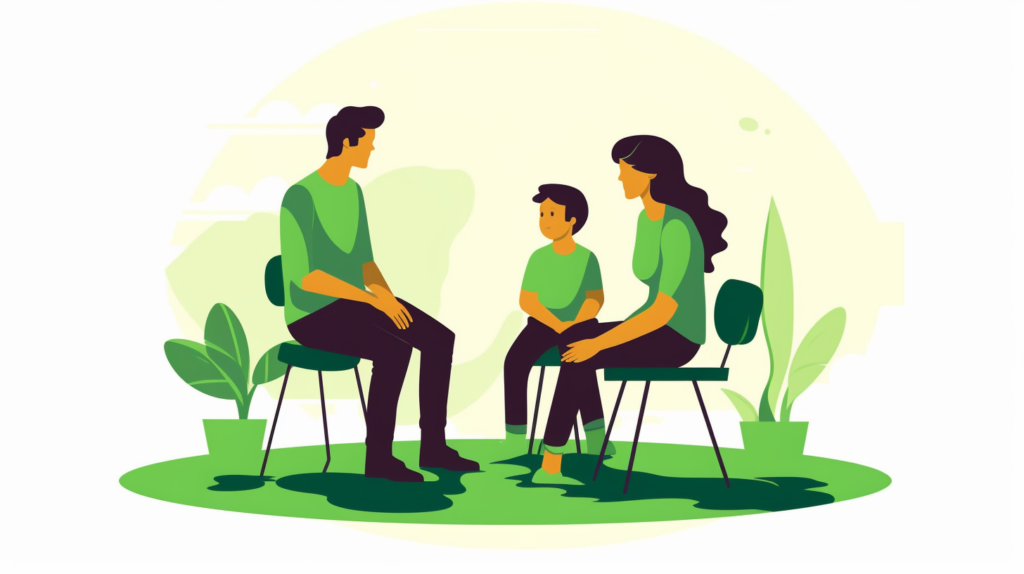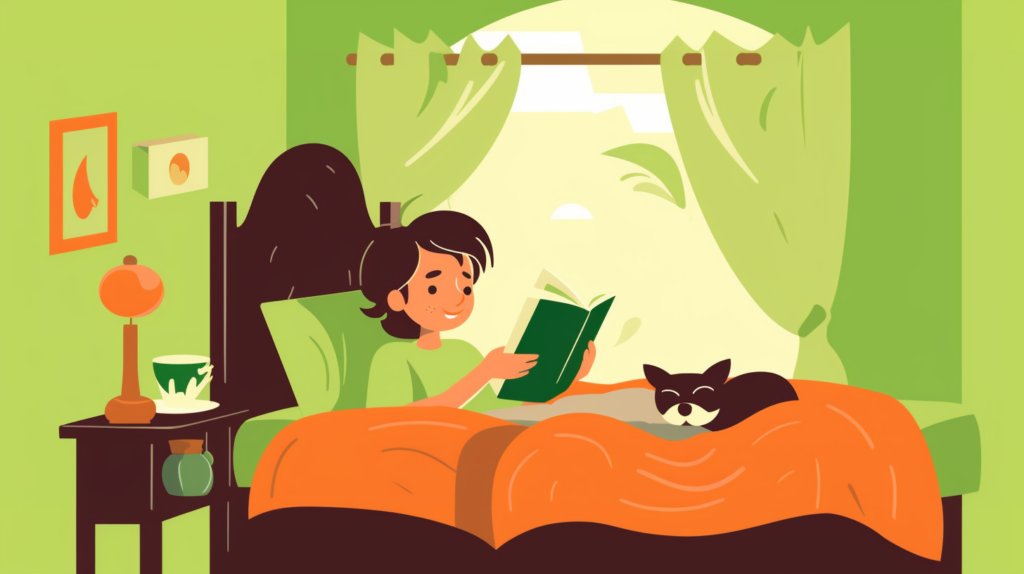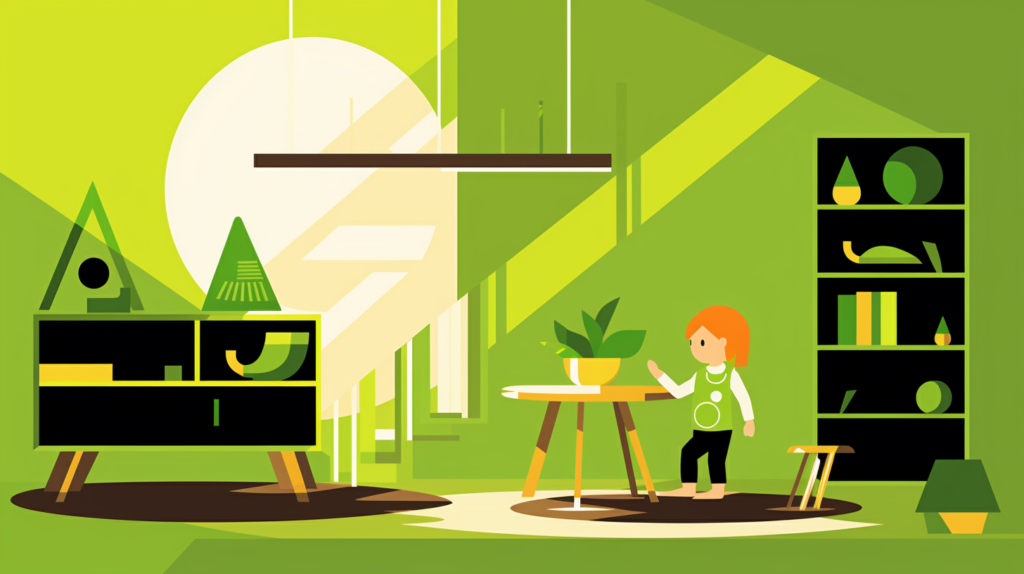As a parent, few things are more distressing than watching your child struggle with sleep apnea.
The restless nights and exhausted days take a toll on everyone’s health and leave you feeling helpless.
But there is hope.
With the right pediatric CPAP mask, your child can sleep peacefully again and return to their usual energetic self.
This guide is designed to empower you to find the perfect mask for your child.

We understand this process can be overwhelming. There are many options and factors to weigh when making this critical purchase decision.
Our goal is to be a trusted resource—to walk beside you and provide the insights you need to make an informed choice confidently.
Within these pages, you’ll discover the benefits of pediatric CPAP masks and the types available. We’ll explore key considerations for finding the best fit.
Most importantly, you’ll learn you don’t have to navigate this alone. Together, we can help your child sleep soundly and wake up refreshed.
The power to make a difference is already within you.
Why Managing Sleep Apnea Symptoms Through PAP Therapy is Essential
No parent wants to watch their child deal with a chronic or ongoing condition like sleep apnea.
However, as outlined in our guide on sleep apnea in kids and teens, sleep apnea often goes undetected in children or isn’t considered when treating the symptoms that manifest.
In this section, we’ll take a quick look at how PAP therapy can help with symptoms you might not even realize are related to sleep apnea.
No More Bedwetting
Frequent bedwetting is a prominent symptom of sleep apnea in children.
In many cases, this occurs in response to apnea episodes and dysregulation of hormones.
Once you establish an effective PAP therapy routine, you might find that bedwetting ceases entirely.
This benefits your child’s self-esteem, reduces laundry costs, and minimizes disruption to the household.
Reduced Behavioural Issues
Sleep apnea can manifest in children through aggression, hyperactivity, mood swings, and other behavioural disorders.
Studies demonstrate CPAP therapy dramatically improves behaviour, with reduced aggression, hyperactivity, depression, and anxiety in children with sleep apnea.

PAP therapy allows children’s true personalities and behaviours to shine through by preventing the neurocognitive effects of fragmented, low-oxygen sleep.
Increased Focus and Attention
Sleep apnea and ADHD have a bidirectional relationship, with each disorder increasing the severity of the other, as highlighted by this American Academy of Pediatrics study.
CPAP has been shown to lessen hyperactivity, impulsivity, and inattention in children with both conditions.
As a result, the children can better maintain focus and thrive, often minimizing frustrating and erratic behaviours.
While not a cure, CPAP may be a helpful adjunct treatment for ADHD in children with an underlying sleep disorder.
Better School Performance
If your child is experiencing behavioural dysregulation or ADHD, there’s a strong chance the effects spill over into their school performance.
By addressing these issues, you can support your child in their educational endeavours and help ensure they are at their best during their academic day.
Improved Overall Development and Minimized Long-Term Health Risks
Reduced REM sleep and frequent oxygen deprivation can have lasting effects on your child that aren’t immediately observable.
From an enlarged heart and high blood pressure to forgetfulness and depression, the impacts are widespread and long-lasting.
Children treated for sleep apnea symptoms using PAP therapy often return to baseline behaviours and development quickly and can reach their full potential more easily.
The Importance of Pediatric CPAP Masks in Treating Sleep Apnea in Children
According to Up to Date, between 1% and 5% of children live with obstructive sleep apnea (OSA).
Pediatric CPAP masks are a crucial tool in treating children’s sleep apnea.
They help reduce symptoms, improve outcomes, and support an active, healthy lifestyle.
Before we dive into how to choose a CPAP mask for your child, let’s explore why these masks play such an essential role in managing your child’s sleep apnea symptoms and what makes them unique compared to standard adult CPAP masks.
A Tailored Fit For Small Faces
Kids aren’t just small adults—they have their own specific needs when it comes to medical treatment.
This is particularly true with continuous positive airway pressure (CPAP) therapy, where fit and comfort influence success rates significantly.
Pediatric CPAP masks are engineered with this fact in mind.

They’re made smaller than regular ones used by adult patients to fit small faces comfortably.
But they’re not simply scaled down. They’re designed to fit the subtle ways a child’s facial structures typically differ from an adult’s.
With mask comfort and fit being an essential element of CPAP success, pediatric CPAP masks are a straightforward way to improve the outcome of your child’s PAP therapy adventure.
Improved Comfort Means Improved Compliance
Treating any health condition requires patience, perseverance, and sometimes courage.
As a child, these needs are even more critical.
The fear or anxiety surrounding CPAP therapy could be daunting for parents and little ones.
However, a well-fitted mask reduces discomfort—be it physical, emotional, or mental—thereby making the overall treatment experience less troubling.
The result is more frequent and thorough CPAP use—and improved benefits across the board.
A Firm Seal Ensures Better Results
Your mask seal is everything when it comes to getting the most out of your PAP therapy—especially if your child is prone to tossing and turning at night.
CPAP masks for kids are more likely to stay in place without overtightening the mask or modifying the setup in ways that could compromise therapeutic results—or your warranty!
A better seal means less movement and leaks, meaning that the full prescribed pressure is applied at all times and that you minimize the risk of skin irritation.
It’s a win-win!
Factors to Consider When Choosing a Pediatric CPAP Mask
We can move on to the what with the why out of the way.
Selecting the best pediatric CPAP mask for your child’s sleep apnea therapy can seem overwhelming.

Don’t fret. It’s easier than you may think.
Here are some key considerations that will help guide your decision and ensure successful treatment outcomes.
Size Matters: Get The Right Fit
The first step is finding a mask with the correct size and fit.
This isn’t just about comfort. As discussed previously, an ill-fitting mask could leak air or apply unnecessary pressure on your child’s face, affecting their prescribed PAP therapy effectiveness.
It can also impact comfort, and no child wants to sleep while uncomfortable.
And if your kids aren’t sleeping well, there’s a good chance you won’t be either.
Adjustability Is Key
Kids grow fast. Hence, adjustability in a pediatric CPAP mask becomes essential over time.
By choosing the right size to start and finding a model with plenty of adjustment options, you avoid having to shop for a new mask design or quickly order larger sizes.
A flexible design allows minor adjustments as needed, which extends product life while maintaining consistent comfort throughout its usage period.
Keeping Vision Clear
Having a mask strapped to your face can be an intense experience for adults and kids, especially at first.
As such, choosing a model that leaves a clear view can help reduce feelings of claustrophobia or anxiety while also allowing your little one to keep their bedtime reading routine.
Child Preferences
As with full-size adult CPAP masks, pediatric CPAP masks are available in different designs.
Choosing an option with your child’s input can help add a sense of control and calm to the process while minimizing the risk of selecting a model that makes your child uneasy or one they refuse to wear.

In general, you’ll want a mask with a smaller footprint if your child sleeps facedown or on their side and a larger footprint if they sleep on their back or have a high-pressure prescription.
For further considerations—including sleep position—be sure to check our guide to mask types for different sleep positions to get an idea of the best style for your child.
Price Point
While we’d like to consider our children’s health priceless, choosing CPAP accessories you can afford to replace regularly is best.
Even if working optimally, you must periodically replace the mask, headgear, CPAP tubing, and other items.
If your insurance doesn’t cover the total price or you’re replacing a damaged item out of pocket, having an option that won’t blow your budget is likely worth missing the occasional fancy feature—especially if it is the difference between replacing broken items or continuing to use an item past its prime.
Popular Pediatric CPAP Masks
Like their full-size counterparts, pediatric CPAP masks come in a diverse range, catering to the unique needs and comfort preferences of children undergoing CPAP therapy.
Many of the pediatric models are designed based on a similar adult model.
If you’re unsure where to start, consider these picks excellent options.
Wisp Pediatric Nasal CPAP Mask Fit Pack
The Wisp Pediatric Nasal CPAP Mask has gained a solid following among parents seeking an effective solution for their child’s obstructive sleep apnea.
Its design focuses on delivering maximum comfort while ensuring optimal functionality during prescribed CPAP therapy sessions.
This mask comes with adjustable headgear that allows secure fitting without exerting excessive pressure on your child’s delicate skin.

It also features a distinctive cushion design, providing superior leak protection, crucial in maintaining consistent positive airway pressure throughout the night.
In addition to its impressive features, it offers compatibility with most standard CPAP machines, making it comfortable and versatile—all essential factors when considering options for treating severe obstructive sleep apnea in children.
It’s even available as a Wisp Pediatric Nasal CPAP Mask fit pack to help take the guesswork out of finding the perfect fit!
ResMed Pixi Pediatric CPAP Mask
This specially designed Pixi Pediatric CPAP Mask comfortably fits small faces while providing excellent safety with its quick-release latch system.
This allows for swift removal during emergencies or even routine cleaning procedures.

Its soft silicone cushion minimizes discomfort often associated with the long-term use of such devices, thereby reducing any anxiety surrounding CPAP therapy experienced by children and their caregivers.
Last but not least, the quiet operation ensures minimal disturbances, enabling restful nights’ sleep necessary for healthy growth and development at these critical ages.
You can learn more about the ResMed Pixi Pediatric CPAP Mask at ResMed’s website.
Three Tips to Help Transition to Pediatric CPAP Treatment Successfully
To ensure comfort and safety during your child’s prescribed CPAP therapy journey, here are three steps you should consider.
1. Gradual Introduction of the Mask
The key to successful adaptation lies in taking baby steps.
You don’t have to rush your child into wearing the mask all night long from day one.
Instead, allow your child some daytime practice with their new sleep aid.
This could involve wearing it while engaging in relaxed activities such as reading, watching TV, or playing video games.
Or it could involve relaxing with family while wearing the mask before bed.
Anything that helps them get used to having something on their face without causing distress will help ease the uncertainty and discomfort at bedtime.
2. Creating a Sleep-Friendly Environment
A comfortable environment plays a significant role in easing anxiety surrounding CPAP therapy for children undergoing this treatment process.
If you don’t have a regular bedtime routine, consider creating one around activities such as storytime or soft music playing softly before bed.

If you already have a routine, try to incorporate the PAP therapy seamlessly into those routines as much as possible.
This will minimize the adjustment required and allow your child to get comfortable with the new addition to their sleep setup faster.
3. Educate Your Child to Improve Confidence and Communicate Importance
Often, the scariest part of pediatric PAP therapy is the unknown.
Take a few minutes to sit down with your child and explain to them in age-appropriate terms the importance of what their CPAP machine does, what’s going to happen, and why there’s nothing to fear.
This simple act shifts PAP therapy from something your child has no say in and might not understand to something they’re doing for their health—no different than eating their vegetables or brushing their teeth.
While the exact discussion is likely to look different based on your child’s age, maturity, knowledge, and your parenting style, the following are possible starting points for discussing this critical process with your child.
Ages 2-4:
“Your special CPAP mask will help you breathe easier at night! When you sleep, it can feel like a big elephant is sitting on your chest, making it tough to take deep breaths. The mask blows air into your nose to keep the elephant off your chest so you can breathe properly. The air will feel like a gentle breeze, and it will help you sleep much better!”
Ages 5-7:
“Your CPAP mask is like a superhero sidekick that helps you fight the bad guys at night! The bad guys are like bullies who try to block your airway and stop you from breathing well when you sleep. But your mask will blow a strong wind to defeat those bullies so you can breathe easy all night. It will help you get the energy to play and do well in school!”
Ages 8-10:
“Your CPAP mask is a special device doctors recommend to treat your sleep apnea. Sleep apnea means your airway gets blocked sometimes at night, stopping air from getting to your lungs. This can make you tired and grumpy. The CPAP mask uses air pressure to keep your airway open while you sleep, ensuring enough oxygen gets to your brain and body. The mask initially feels strange, but you’ll get used to it quickly. And it will help you feel so much better during the day!”
Age-Specific Considerations for Pediatric Sleep Apnea Therapy
For pediatric sleep apnea, CPAP therapy is not a one-size-fits-all solution—age-specific needs and responses must also be taken into account.
Different age groups have unique needs and responses to CPAP therapy, which require careful consideration.
When determining how to implement PAP therapy for your child best, consider these age-specific accommodations and considerations to maximize benefits and minimize discomfort.
Infants: Customizing Comfort
In infants grappling with obstructive sleep apnea or disordered breathing, the choice of pediatric CPAP masks is critical.
As their facial structure rapidly evolves during this stage, you must ensure the mask fits well without hindering natural development.
The journey can be challenging, but remember you’re not alone.
Countless families have successfully managed severe obstructive sleep apnea in their children using prescribed CPAP therapy.
Toddlers: Balancing Curiosity and Compliance
The toddler years are marked by rapid growth and curiosity about everything new—including their CPAP masks.
Ensuring they keep it on throughout the night requires patience from parents.

You might find play-based activities involving the machine helpful in making toddlers comfortable around them, but later find this encourages them to play with their mask when they should be sleeping.
Balance is essential.
School-Aged Children: Navigating Emotional Landscapes
Cognitive abilities develop rapidly among school-aged children, meaning they understand why they need CPAP treatment but may also feel self-conscious when wearing a mask at night.
It’s important to provide emotional support alongside professional counselling sessions if needed as part of your child’s sleep apnea therapy plan.
Remember, every small step forward counts towards managing this condition effectively.
FAQs About Pediatric CPAP Masks
Can kids use CPAP masks?
Continuous Positive Airway Pressure (CPAP) therapy is a standard and effective treatment for sleep apnea in children.
Do they make CPAP masks for children?
Absolutely. Pediatric CPAP masks are designed specifically to fit the smaller facial structures of children, ensuring comfort and efficacy during treatment.
How old does my child need to be to use a CPAP machine?
With proper supervision and adjustment, even infants can benefit from PAP therapy. In all cases, your primary care provider or sleep specialist is the best source of safety information.
Never allow a child to use a CPAP machine without a prescription.
What are the CPAP settings for pediatrics?
Pediatric CPAP settings vary based on individual needs. A healthcare provider will determine appropriate pressure levels by considering factors like age, size, severity of the condition, etc.
Conclusion
Finding the right CPAP equipment and routine for your child may seem daunting, but you’re not alone.
Countless families have successfully managed pediatric sleep apnea through careful mask selection, patient support, and perseverance.
While each child’s needs are unique, the proven benefits of CPAP give parents everywhere reason to hope.
With a well-fitted pediatric mask, consistent use, and an empowered perspective, your child can sleep soundly and thrive again.
You now have the insights to make informed decisions that prepare your child for success.
If any uncertainties linger or you need help locating the most popular, affordable pediatric CPAP masks, the CPAP Supply experts are here. As Canada’s leading online CPAP provider in customer satisfaction, we want each child to realize the full benefits of restful sleep. Contact us anytime for personalized guidance.
The future looks bright for your child. With your compassion and the proven power of CPAP, the best nights of sleep and days of their life are yet to come. You’ve got this!
